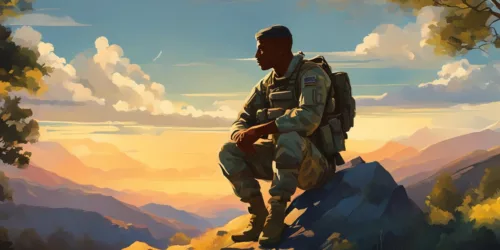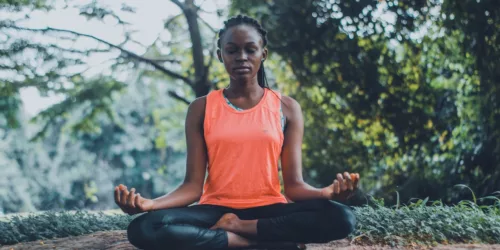Meditation Room Ideas On A Budget: Unwind in Small Spaces

You don’t need to spend a fortune to create a sacred space in your own home. Dive into this article to discover the best meditation room ideas that won’t break the bank. Whether you’ve got a mansion or a tiny apartment, there’s a zen space waiting to be created. Why read this? Because inner peace shouldn’t come with a hefty price tag.
1. What Makes a Good Meditation Room?
The foundation of any meditation space is the feeling it evokes, not the cost behind it. From the soothing presence of natural light to the calming echo of silence, a meditation room is where your mind finds reprieve. Key components include:
- Calm Atmosphere: The ambiance should immediately make you feel at ease. Consider colors that soothe, minimal distractions, and possibly some zen-inspired home decor.
- Dedicated Space: Even if you don’t have a separate room, dedicate a corner or a small space exclusively for meditation. This commitment can enhance your meditation practice.
- Essentials: From a cushion or yoga mat to a quiet space, gather essentials that help you meditate without discomfort.
2. How Can I Set Up a Meditation Room in a Small Space?
Not everyone has the luxury of a spare room. But guess what? You don’t need one. Even a small nook can be transformed into a tranquil meditation space.
- Prioritize Floor Space: It’s where you’ll sit, after all. Ensure you have enough room for a cushion or yoga mat. A comfortable floor space is a must.
- Maximize Vertical Space: Use wall-mounted shelves or hooks. Hang essential oil diffusers, or use them to store cushions when not in use.
- Make it Botanical: Bring in nature with a couple of plants. They don’t only uplift the mood but also purify the air. A botanical meditation room can be a refreshing choice.
3. What are Some Budget-Friendly Meditation Room Ideas?
Meditation should be about inner peace, not financial stress. Here are some affordable ways to set up your meditation space:
- DIY Decor: Why buy when you can DIY? Create zen-inspired wall art, or craft your own meditation cushions. There are countless tutorials online to help you get started.
- Repurpose Existing Furniture: That small table collecting dust in the garage? Perfect for holding a candle or two. Look around and get creative with what you already have.
- Thrift Store Finds: Often, thrift stores have unique, zen-like pieces that can be bought for a steal. It’s sustainable and budget-friendly.
4. Can I Combine My Meditation Room with Other Functions?
Absolutely. A dual-purpose room can be a smart solution for those strapped for space.
- Home Office + Meditation Space: After a long work day, shift from your desk to your meditation corner in the same room. It’s efficient and ensures you take those much-needed breaks.
- Bedroom Zen Zone: If your bedroom is your sanctuary, make a space in it for meditation. Remember to differentiate the spaces, perhaps with a room divider or a distinct color palette.
There’s a misconception that setting up a meditation room requires lavish decor and a dedicated space. The truth? All you really need is a passion for meditation and some creativity. Whether it’s a nook, a corner, or an entire room, there are myriad ways to create a serene meditation space without burning a hole in your pocket.
5. Which Decor Elements Elevate a Meditation Space? Meditation Room Decor
Decor plays a crucial role in setting the ambiance. But it doesn’t mean spending extravagantly.
- Natural Light: A window can do wonders. If you have one in your meditation area, utilize it. The soft morning or evening light can naturally soothe and set the tone for your meditation sessions.
- Simple Decor: You don’t need to overcomplicate. A few well-placed items like candles, crystals, or a small Buddha statue can transform the vibe.
- Color Palette: Opt for earthy, neutral colors. They evoke calmness and are often associated with zen meditation.
6. What Cushions and Pillows Should I Consider?
Comfort is key. If you’re uncomfortable, it’ll be harder to meditate.
- Meditation Cushions: They’re specifically designed for meditation, ensuring a comfortable seated position. Look out for deals or try sewing your own!
- Pillows: Regular pillows can be arranged around your main meditation cushion for added comfort and support. They also add to the cozy factor.
- Yoga Mat: If you alternate between yoga and meditation, a yoga mat can serve a dual purpose. It’s cushioning and can define your meditation area.
7. How Do I Make My Meditation Room Feel Bigger?
Small spaces can be made to feel expansive with some simple ideas:
- Mirrors: A well-placed mirror can double the perceived size of your room. It also adds an element of depth.
- Declutter: Keep the space minimal. The more clutter, the smaller it feels. Plus, a clutter-free space resonates with the very essence of meditation.
- Open Floor Plan: By keeping the center of the room free and placing items or furniture around the perimeter, you open up the floor space, making it appear larger.
8. Incorporating Nature: Why and How? Zen And Relaxation
Nature is inherently calming. Incorporating it into your meditation room can elevate your experience.
- Indoor Plants: They’re not just beautiful; they purify the air and bring life to your space. Consider plants like the peace lily or snake plant which require minimal maintenance.
- Nature Sounds: If you can’t have physical elements, bring in nature sounds. Birdsong, flowing water, or rustling leaves can be played through a speaker to enhance the meditation experience.
- Natural Materials: Think bamboo, wood, or stone. Items made from natural materials have an authentic feel and can resonate with your zen aspirations.
With each choice you make, remember to trust your intuition. The ultimate goal is to create a meditation room that feels right for you, making every session a journey into deeper relaxation and mindfulness. In our next segment, we’ll explore ways to maintain the sanctity of your space, and how to continually evolve it as your meditation journey progresses.
9. Preserving the Calm: How to Keep Your Space Distraction-Free?
The environment in which you meditate is paramount. It needs to foster relaxation and deep introspection.
- Establish Boundaries: If your meditation space is part of another room in your home, use room dividers or curtains. This not only provides a visual separation but can also minimize distractions.
- Quiet Space: Soundproofing can be expensive, but simple fixes like thick curtains or a door draft stopper can reduce noise intrusion. Also, consider playing calming background music to drown out any potential disturbances.
- Regular Cleansing: Dust and declutter regularly. Keeping your space clean helps in maintaining a positive energy flow.
10. On-the-Go Meditation: Creating a Mobile Sacred Space
Don’t have a dedicated room? No problem!
- Meditation Corner: Even if you don’t have a separate room, a simple corner with a cushion, a small table for your essential oils or candles, and some soft lighting can be just as effective.
- Digital Zen: Utilize mobile apps that offer guided meditations and ambient sounds. This way, any space can be transformed into a meditation zone at a moment’s notice.
- Travel Kit: A small bag with a foldable mat, a cushion, and a pair of headphones. Your meditation practice doesn’t have to be stationary. Be ready to meditate wherever life takes you!
11. Budget-friendly Ideas for Room Expansion
As your practice grows, you might feel the need to expand your space.
- Repurposing Furniture: Before buying new items, see if you can repurpose existing furniture. Perhaps an old bench could be cushioned and covered to create a new seating area.
- DIY Decor: Handmade items, whether it’s wall art or simple decor like dream catchers, can be budget-friendly and add a personal touch to your meditation room.
- Thrift & Second-hand Stores: You’d be surprised by the gems you can find. From meditation cushions to decor, give second-hand items a new lease of life in your meditation space.
12. Adapting Your Space with the Seasons
Seasonal changes can affect our mood and energy.
- Summer Meditation: In warmer months, consider lighter fabrics and incorporate cooling elements like a fan or fresh flowers.
- Winter Warmth: In colder months, add some cozy blankets and perhaps a space heater to make your meditation room a warm retreat.
- Natural Decor: Use fallen leaves in autumn, blossoms in spring, and other seasonal elements to connect with nature and its cycles.
Your meditation journey is ever-evolving. So, allow your meditation room to reflect that growth. Embrace changes and innovations, but always keep the focus on creating a tranquil environment that aids your introspective voyage. In our concluding segment, we’ll bring together the best practices and highlights to remember as you journey onward.
13. The Essence of Minimalism: Less is More
When it comes to meditation room design, simplicity reigns supreme.
- Prioritize Essentials: Start with a cushion or yoga mat, a quiet space, and perhaps a small table for essentials like candles or incense. Remember, the main focus is your meditation practice.
- Clear Clutter: A clutter-free space promotes a clutter-free mind. Regularly reassess your room and remove anything that doesn’t serve your practice.
- Natural Elements: A plant or two, some natural light, and simple earthy decor can make the space feel inviting without overwhelming it.
14. Celebrate Personal Touches
Your meditation space should resonate with you.
- Personal Altar: A small table with items like personal mementos, photos, or artifacts can remind you of your spiritual journey and aspirations.
- DIY Decor: Handmade or personalized items can imbue the space with unique energy, reflecting your personal touch.
- Affirmations: Consider adding some hand-written affirmations or quotes that resonate with you. They can be powerful reminders and motivators during your meditation sessions.
15. Incorporating Multi-purpose Design
If space is a concern, consider integrating your meditation space into your daily life.
- Flexible Furnishings: Look for furniture pieces that can serve dual purposes – such as ottomans that offer storage or foldable screens that can easily be stored away.
- Blending Spaces: If you’re using a part of your bedroom or home office, ensure that your meditation corner can be easily set up and packed away. This way, you can transition smoothly between different activities.
16. Meditation Room Updates on a Dime
Periodic rejuvenations can keep your space fresh and inviting.
- Swap Decor: Change out cushions, throws, or wall hangings occasionally. This keeps the energy fresh and can give a new look without major revamps.
- Lighting: Experiment with different lighting options. Sometimes, just changing the color or intensity of lighting can transform the space.
- Seasonal Touches: As mentioned earlier, aligning with the seasons can bring a new feel to the room every few months.
Important Takeaways to Remember:
- Stay Flexible: Your meditation needs may evolve. Allow your space to grow and transform with you.
- Stay True to Yourself: While guidance is helpful, trust your instincts. Your space should be a reflection of you.
- Budget isn’t a Constraint: A dedicated heart, some creativity, and a dash of inspiration can craft the dream meditation room, irrespective of the budget.
- Harmony is Key: Whether it’s the colors, the decor, or the overall vibe, aim for a harmonious blend. The room should induce peace the moment you step in.
Your quest to find inner peace deserves a dedicated space. By implementing the meditation room ideas we’ve discussed, even on a tight budget, you can establish a sanctuary that beckons you daily, setting the stage for profound self-discovery and growth. Remember, it’s not about the grandeur or expense; it’s about creating a space where your soul feels at home.






